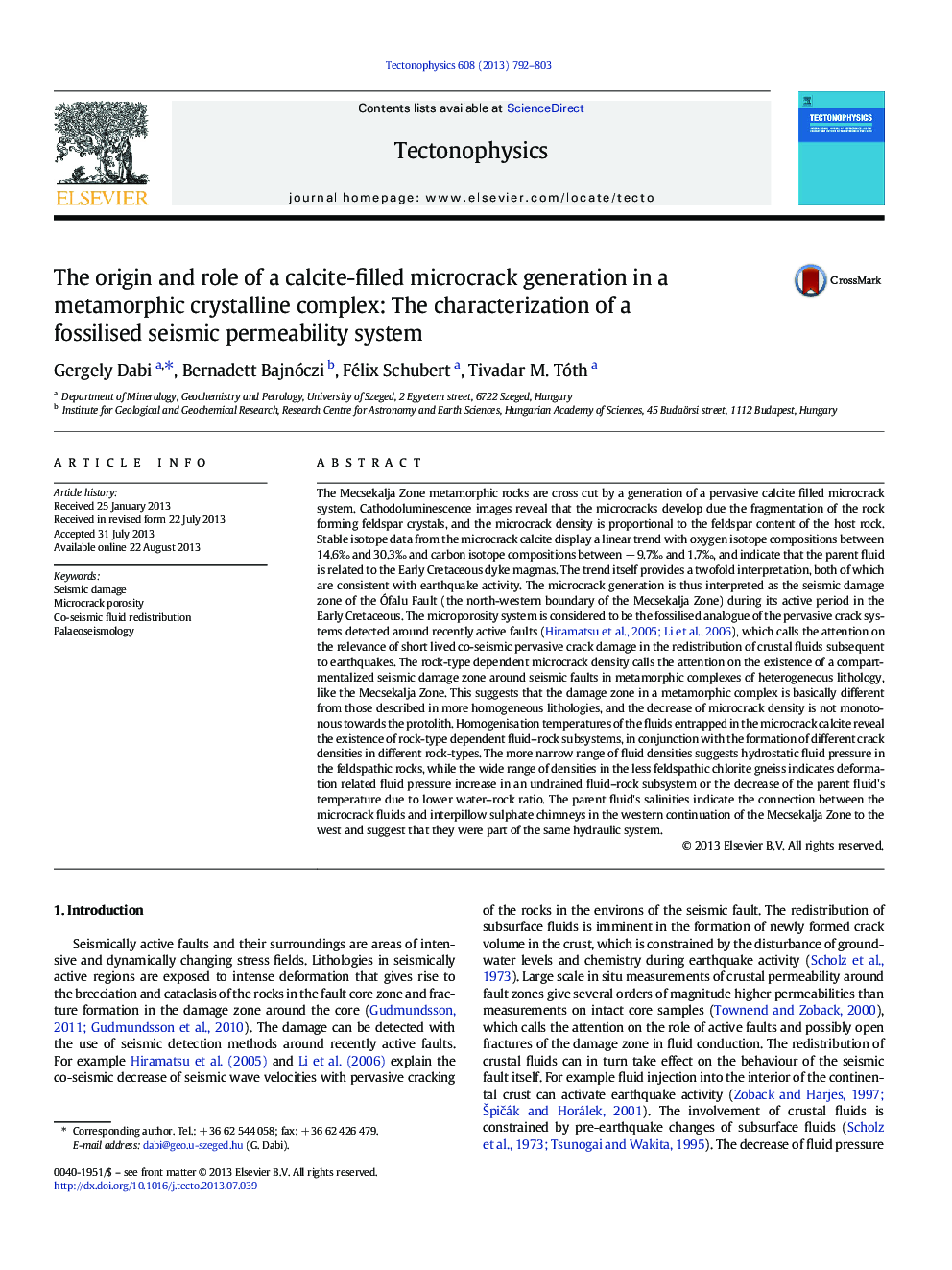| کد مقاله | کد نشریه | سال انتشار | مقاله انگلیسی | نسخه تمام متن |
|---|---|---|---|---|
| 6434004 | 1636779 | 2013 | 12 صفحه PDF | دانلود رایگان |
- Textural description of a pervasive microcrack system
- The interpretation of the stable isotope compositions of the microcrack calcite
- The interpretation of the data in conjunction with earthquake activity
- The discussion of the formation of the microcrack damage zone
- Discussion of fluid properties, the fluid's connection to the overlying strata
The Mecsekalja Zone metamorphic rocks are cross cut by a generation of a pervasive calcite filled microcrack system. Cathodoluminescence images reveal that the microcracks develop due the fragmentation of the rock forming feldspar crystals, and the microcrack density is proportional to the feldspar content of the host rock. Stable isotope data from the microcrack calcite display a linear trend with oxygen isotope compositions between 14.6â° and 30.3â° and carbon isotope compositions between â 9.7â° and 1.7â°, and indicate that the parent fluid is related to the Early Cretaceous dyke magmas. The trend itself provides a twofold interpretation, both of which are consistent with earthquake activity. The microcrack generation is thus interpreted as the seismic damage zone of the Ãfalu Fault (the north-western boundary of the Mecsekalja Zone) during its active period in the Early Cretaceous. The microporosity system is considered to be the fossilised analogue of the pervasive crack systems detected around recently active faults (Hiramatsu et al., 2005; Li et al., 2006), which calls the attention on the relevance of short lived co-seismic pervasive crack damage in the redistribution of crustal fluids subsequent to earthquakes. The rock-type dependent microcrack density calls the attention on the existence of a compartmentalized seismic damage zone around seismic faults in metamorphic complexes of heterogeneous lithology, like the Mecsekalja Zone. This suggests that the damage zone in a metamorphic complex is basically different from those described in more homogeneous lithologies, and the decrease of microcrack density is not monotonous towards the protolith. Homogenisation temperatures of the fluids entrapped in the microcrack calcite reveal the existence of rock-type dependent fluid-rock subsystems, in conjunction with the formation of different crack densities in different rock-types. The more narrow range of fluid densities suggests hydrostatic fluid pressure in the feldspathic rocks, while the wide range of densities in the less feldspathic chlorite gneiss indicates deformation related fluid pressure increase in an undrained fluid-rock subsystem or the decrease of the parent fluid's temperature due to lower water-rock ratio. The parent fluid's salinities indicate the connection between the microcrack fluids and interpillow sulphate chimneys in the western continuation of the Mecsekalja Zone to the west and suggest that they were part of the same hydraulic system.
Journal: Tectonophysics - Volume 608, 26 November 2013, Pages 792-803
